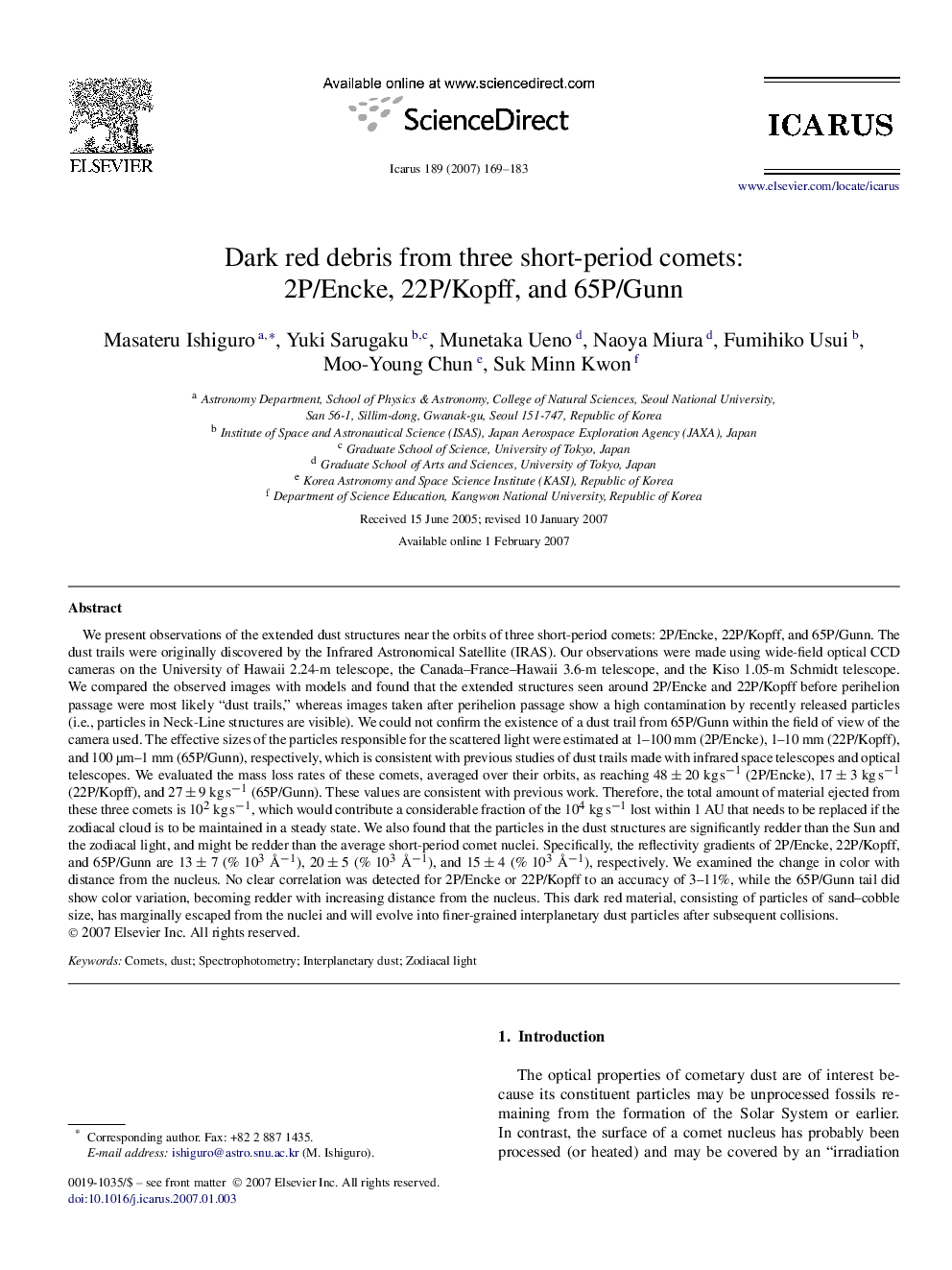| کد مقاله | کد نشریه | سال انتشار | مقاله انگلیسی | نسخه تمام متن |
|---|---|---|---|---|
| 1775570 | 1021198 | 2007 | 15 صفحه PDF | دانلود رایگان |

We present observations of the extended dust structures near the orbits of three short-period comets: 2P/Encke, 22P/Kopff, and 65P/Gunn. The dust trails were originally discovered by the Infrared Astronomical Satellite (IRAS). Our observations were made using wide-field optical CCD cameras on the University of Hawaii 2.24-m telescope, the Canada–France–Hawaii 3.6-m telescope, and the Kiso 1.05-m Schmidt telescope. We compared the observed images with models and found that the extended structures seen around 2P/Encke and 22P/Kopff before perihelion passage were most likely “dust trails,” whereas images taken after perihelion passage show a high contamination by recently released particles (i.e., particles in Neck-Line structures are visible). We could not confirm the existence of a dust trail from 65P/Gunn within the field of view of the camera used. The effective sizes of the particles responsible for the scattered light were estimated at 1–100 mm (2P/Encke), 1–10 mm (22P/Kopff), and 100 μm–1 mm (65P/Gunn), respectively, which is consistent with previous studies of dust trails made with infrared space telescopes and optical telescopes. We evaluated the mass loss rates of these comets, averaged over their orbits, as reaching 48±20 kgs−1 (2P/Encke), 17±3 kgs−1 (22P/Kopff), and 27±9 kgs−1 (65P/Gunn). These values are consistent with previous work. Therefore, the total amount of material ejected from these three comets is 102 kgs−1, which would contribute a considerable fraction of the 104 kgs−1 lost within 1 AU that needs to be replaced if the zodiacal cloud is to be maintained in a steady state. We also found that the particles in the dust structures are significantly redder than the Sun and the zodiacal light, and might be redder than the average short-period comet nuclei. Specifically, the reflectivity gradients of 2P/Encke, 22P/Kopff, and 65P/Gunn are 13±713±7 (% 103 Å−1103 Å−1), 20±520±5 (% 103 Å−1103 Å−1), and 15±415±4 (% 103 Å−1103 Å−1), respectively. We examined the change in color with distance from the nucleus. No clear correlation was detected for 2P/Encke or 22P/Kopff to an accuracy of 3–11%, while the 65P/Gunn tail did show color variation, becoming redder with increasing distance from the nucleus. This dark red material, consisting of particles of sand–cobble size, has marginally escaped from the nuclei and will evolve into finer-grained interplanetary dust particles after subsequent collisions.
Journal: Icarus - Volume 189, Issue 1, July 2007, Pages 169–183